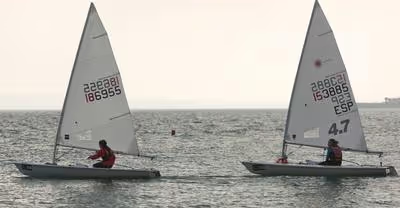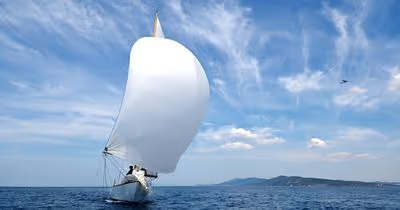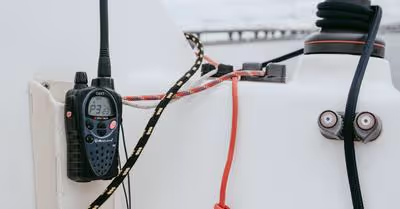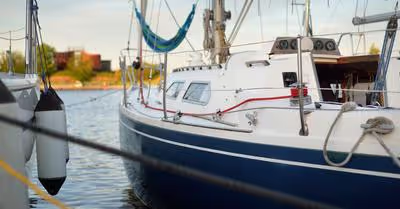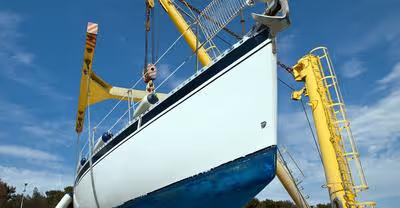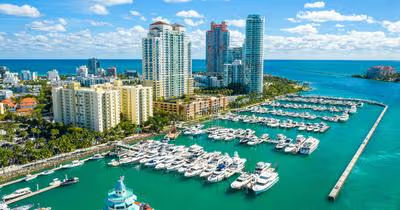Table of Contents
Practice Makes Perfect
If you have an opportunity to practice docking at a marina or when taking on fuel, it would be a good time to test your skills. Keep in mind that you will likely be docking around other expensive boats, and you do not want to damage yours or others, so practice is important.
You should look to practice at a longer dock and in calm conditions, if possible. This way you can safely work your way to the dock without beating your boat up in a real docking situation in undesirable conditions. Remember to keep calm and not put too much pressure on yourself.
Testing out your throttle is another good example of getting to know your boat. You will need to learn how to put your boat at a slow-moving speed and put it exactly where it needs to go.
Heading Up to the Dock
Depending on your boat size and the marina of choice you are attempting to dock at, there are a handful of variables to consider. Each one might present a slightly different situation in landing, so you need to consider your options carefully.
Room to Maneuver
The first step is to see how much room you are going to need to maneuver. If you can dock next to a long pier, then those are always ideal in comparison to backing into a tight space in a marina.
You should also take the time to see if other boats are coming and going. If boats are leaving, this could free up a space to the desired location.
Wind Can Give You a Push
While sailing, the wind is always going to play a factor in how the boat moves. As for docking, it can create a stressful situation.
If the wind is blowing in your face while trying to dock alongside the pier, you should have a steep angle towards the pier and give a sharp turn close to the end to avoid the wind blowing you back out. If the wind is at your stern, allow the wind to push your boat at a slight angle to the pier.
Current Can be Wicked
While the wind can be tricky, you also have to factor in the current. In low waters, this can sometimes prevent sailors from landing on the dock efficiently. When traveling to new waters, consider the tide and how it affects your being able to land on the dock.
Potential Hazards
Some marinas are a little more outdated than others, which means that a handful is not going to have the prettiest docks to land on. In that case, you might want to check your surroundings before docking.
If the marina is older looking, check for broken dock areas or places that need to be repaired before sliding your boat next to it. In addition, make sure there are not any huge rocks or other debris in your way.
Approaching the Dock
When you are arriving close enough to the dock to catch a line, you should be at very low speeds. You want at least one or two people ready to tie off lines, depending on the size of your boat. The goal is to be as safe as possible, so never in a hurry.
Working Lines
Lines are not only used for securing your boat to the dock but can be utilized to help bring either the stern or bow of the boat closer. If you can only catch a line at the bow, secure it first and allow the boat to work off of that line to close up the gap to the stern.
“Catching” a line means that you are tying off your boat to a cleat. These are small metal t-shaped things on a dock, as well as your boat that you will use to tie off.
It might be a good idea to watch someone tie off a boat in case you are not sure how. The right knot can make a world of difference.
Utilize Boat Speed
It would also be a good idea to know how your boat works in reverse, assuming you have a motor. Boats that go in reverse generally yield to the port or left, which could throw you off your direction when trying to land.
Communication is Key
Effectively communicating with your crew about where and how to dock will save a lot of time and headache, as well as the importance of safety. Keeping all limbs and digits inside the boat is one example of being safe while trying to dock.
Your crew should also not attempt to make huge leaps or lunges to the dock. It is up to you to safely navigate to the dock so that your crew, or yourself, will be in the best possible position for balance when trying to tie off the boat.
Final Approach
As you are beginning to be satisfied with the location of the boat and you are tying it off, you want to make sure that you have pivoted the bow of the boat away from the dock.
This might require you to put the boat into reverse temporarily to slow your momentum down. Simply moving from reverse to neutral a few times will greatly help the boat slow down and be at a controlled speed.
The purpose of this is so the widest part of your boat is slightly touching the dock. Boats tend to get beat up a lot when landing, so giving your boat enough room to avoid hitting the dock with waves is another precaution.
When you have successfully landed your boat along the dock, make sure that you have tied off correctly and that you have any fenders to put out. Fenders are a great item to keep your boat off of the dock to protect it from getting beaten around.
Tying Your Boat off Properly
Tying your shoes and a boat off properly are two completely different methods. When it comes to tying off a boat, you want to make sure you have a way to stabilize the boat so that it does not rock its way out of a knot.
The type of lines you are using can make a big difference as well. You want to make sure that you are using nylon lines since they hold up best when wet. They do not have to be super thick, but just enough to get the job done.
It would be ideal if you could have two lines each at the bow and the stern. Also, it would be great if you could cross the stern lines to help slow down the rocking and give the best stability.
Recent Articles



